-
 Bitcoin
Bitcoin $107,352.1067
0.28% -
 Ethereum
Ethereum $2,429.3531
-0.90% -
 Tether USDt
Tether USDt $1.0001
-0.02% -
 XRP
XRP $2.1894
4.62% -
 BNB
BNB $646.7968
0.36% -
 Solana
Solana $147.4290
4.03% -
 USDC
USDC $0.9998
-0.02% -
 TRON
TRON $0.2756
1.52% -
 Dogecoin
Dogecoin $0.1630
1.14% -
 Cardano
Cardano $0.5612
1.18% -
 Hyperliquid
Hyperliquid $37.0580
-0.05% -
 Bitcoin Cash
Bitcoin Cash $496.9410
-0.09% -
 Sui
Sui $2.7318
3.19% -
 Chainlink
Chainlink $13.1503
0.58% -
 UNUS SED LEO
UNUS SED LEO $9.0766
0.55% -
 Avalanche
Avalanche $17.7220
1.46% -
 Stellar
Stellar $0.2380
1.52% -
 Toncoin
Toncoin $2.8439
0.38% -
 Shiba Inu
Shiba Inu $0.0...01143
1.84% -
 Litecoin
Litecoin $85.8053
1.47% -
 Hedera
Hedera $0.1483
2.70% -
 Monero
Monero $314.3240
2.12% -
 Bitget Token
Bitget Token $4.6725
0.77% -
 Dai
Dai $1.0000
0.00% -
 Polkadot
Polkadot $3.3555
1.28% -
 Ethena USDe
Ethena USDe $1.0001
0.02% -
 Uniswap
Uniswap $7.0890
2.64% -
 Pi
Pi $0.5355
-3.40% -
 Pepe
Pepe $0.0...09393
1.06% -
 Aave
Aave $256.8136
-1.90%
What is the transfer speed of USDT?
USDT transfer speeds vary drastically depending on the chosen network (Omni, ERC-20, TRC-20, BEP-20), with TRC-20 and BEP-20 generally fastest but fees and network congestion impacting overall time and cost.
Mar 11, 2025 at 06:20 am
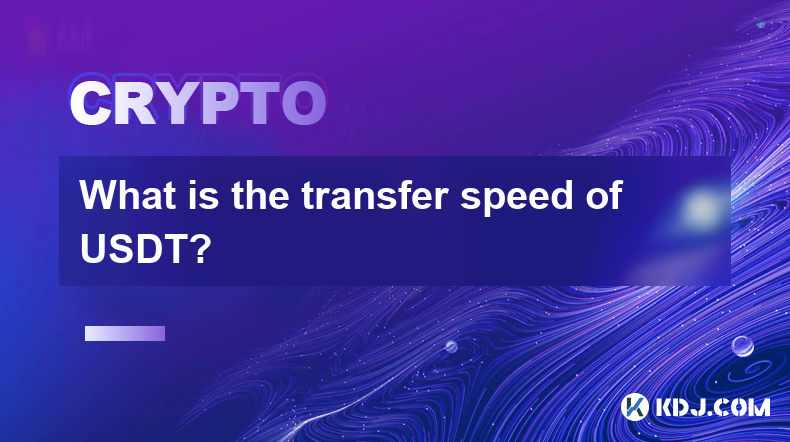
Key Points:
- USDT transfer speeds vary significantly depending on the network used (e.g., Omni, ERC-20, TRC-20, BEP-20).
- Transaction fees also vary greatly across different networks, impacting the overall cost-effectiveness.
- Network congestion plays a crucial role in determining actual transfer times.
- Choosing the right network is critical for optimizing both speed and cost.
- Understanding the differences between these networks is essential for efficient USDT transfers.
What is the transfer speed of USDT?
The question of USDT transfer speed isn't straightforward. USDT, a stablecoin pegged to the US dollar, exists on various blockchains, each with its own transaction speeds. There's no single answer; the speed depends entirely on the network used to send the USDT. This means understanding the underlying blockchain is crucial to predicting transfer times.
USDT on Different Blockchains:
- Omni Layer (on Bitcoin): USDT was initially issued on the Omni Layer protocol, a layer built on top of the Bitcoin blockchain. Transfer speeds here are relatively slow, often taking several minutes to hours, due to Bitcoin's inherent transaction processing limitations. However, fees tend to be relatively low compared to other networks.
- ERC-20 (on Ethereum): The ERC-20 standard allows USDT to operate on the Ethereum blockchain. Transaction times here are generally faster than Omni, usually completing within minutes. However, Ethereum's transaction fees (gas fees) can be significantly higher, especially during periods of high network congestion.
- TRC-20 (on Tron): The TRC-20 standard utilizes the Tron blockchain, known for its high throughput and fast transaction speeds. USDT transfers on TRC-20 are typically very quick, often completing within seconds or minutes. Transaction fees are also generally lower than Ethereum.
- BEP-20 (on Binance Smart Chain): Similar to TRC-20, BEP-20 leverages the Binance Smart Chain (BSC), offering fast transaction speeds and relatively low fees. This makes it a popular choice for quick and cost-effective USDT transfers.
Factors Affecting Transfer Speed:
Several factors beyond the chosen blockchain influence the actual transfer speed:
- Network Congestion: High network activity on any blockchain can lead to delays. During peak times, transactions might take longer to process, regardless of the network's inherent speed.
- Transaction Fees: Higher transaction fees can sometimes incentivize miners or validators to prioritize your transaction, leading to faster processing. However, this isn't guaranteed.
- Miner/Validator Fees: The amount of fees paid influences the priority your transaction receives within the network. Higher fees often result in faster confirmation times.
- Wallet Provider: The specific wallet used can also impact transfer times. Some wallets are more efficient than others in broadcasting transactions.
Step-by-Step Guide to Sending USDT (Illustrative):
Let's assume you're sending USDT via the TRC-20 network:
- Open your wallet: Access your cryptocurrency wallet containing USDT.
- Select 'Send': Locate the 'Send' or 'Transfer' option within your wallet.
- Enter recipient's address: Carefully input the correct TRC-20 address of the recipient. A single typo can result in irreversible loss of funds.
- Specify amount: Input the desired amount of USDT to transfer.
- Choose network: Ensure 'TRC-20' is selected as the network.
- Review and confirm: Double-check all details before confirming the transaction.
This process is similar across different networks, with the key difference being the network selection.
Choosing the Right Network:
Selecting the optimal network for sending USDT requires considering both speed and cost. If speed is paramount, TRC-20 or BEP-20 are usually preferred. If minimizing fees is more important, Omni or TRC-20 might be better choices, depending on network congestion.
Common Questions:
Q: What is the fastest network for USDT transfers?
A: Generally, TRC-20 and BEP-20 offer the fastest transfer speeds, but this can vary due to network congestion.
Q: Are there any risks associated with fast USDT transfers?
A: While speed is advantageous, using less-established networks might carry slightly higher risks, although this is largely mitigated by reputable wallet providers.
Q: How can I check the status of my USDT transfer?
A: Most wallets provide transaction tracking capabilities, allowing you to monitor the progress of your transfer on the blockchain explorer for the specific network used (e.g., Tronscan for TRC-20).
Q: What happens if I choose the wrong network?
A: Sending USDT to the wrong network (e.g., sending ERC-20 USDT to a TRC-20 address) will likely result in the loss of your funds. Always double-check the network and address before confirming the transaction.
Q: Why are there different networks for USDT?
A: Different blockchains offer different features, like speed, transaction fees, and security, allowing users to choose the best option based on their needs. USDT's presence on multiple blockchains expands its accessibility and utility.
Disclaimer:info@kdj.com
The information provided is not trading advice. kdj.com does not assume any responsibility for any investments made based on the information provided in this article. Cryptocurrencies are highly volatile and it is highly recommended that you invest with caution after thorough research!
If you believe that the content used on this website infringes your copyright, please contact us immediately (info@kdj.com) and we will delete it promptly.
- RUVI Token Soars: Can It Eclipse Cardano's Forecast?
- 2025-06-29 02:30:12
- Meme Coin Mania: Can Little Pepe Outshine Shiba Inu and Dogecoin?
- 2025-06-29 02:30:12
- XRP Tokens: Navigating Financial Status and the Art of Buying In
- 2025-06-29 02:50:12
- Shiba Inu, Trump Coin, and the Crypto Bull Run: What's the Deal?
- 2025-06-29 03:50:12
- Coinbase on the 2025 List of Influential Companies: A Crypto Powerhouse?
- 2025-06-29 04:10:12
- Solana, Shiba Inu, and Pepe Coin: What's Hot and What's Not in the Crypto World
- 2025-06-29 03:55:13
Related knowledge
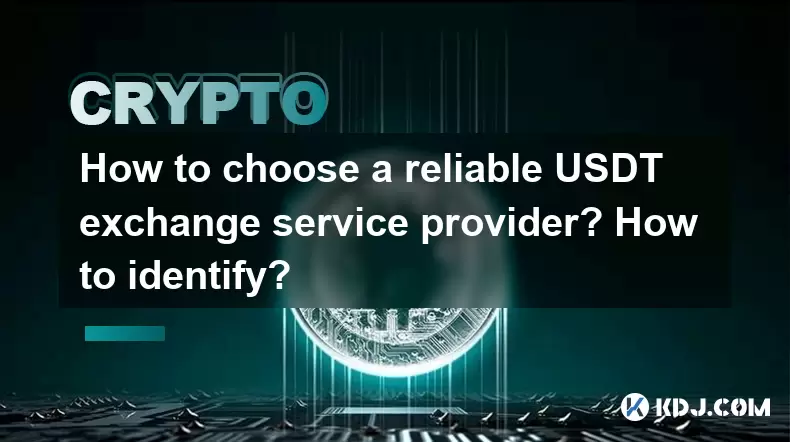
How to choose a reliable USDT exchange service provider? How to identify?
Jun 12,2025 at 03:15pm
Understanding the Role of USDT in Cryptocurrency TradingUSDT (Tether) is one of the most widely used stablecoins in the cryptocurrency market. It is designed to maintain a 1:1 peg with the U.S. dollar, offering traders and investors a way to hedge against volatility while remaining within the crypto ecosystem. Choosing a reliable USDT exchange service p...
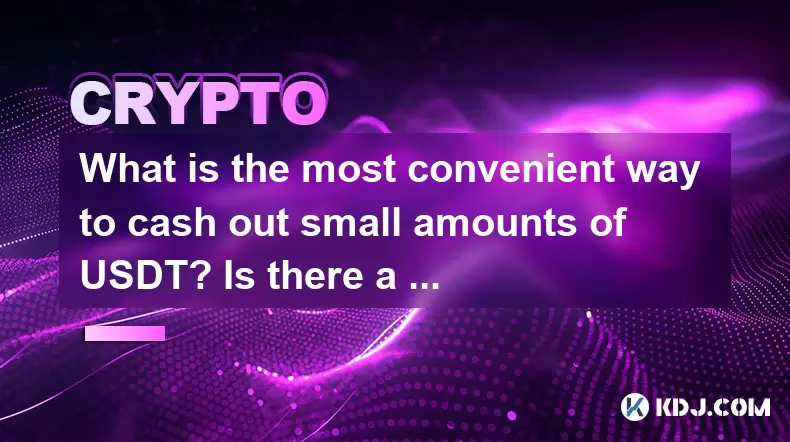
What is the most convenient way to cash out small amounts of USDT? Is there a shortcut?
Jun 11,2025 at 11:00pm
Understanding the Need to Cash Out Small USDT AmountsCashing out small amounts of USDT can be a challenge for many crypto users. Traditional methods often involve high fees, minimum withdrawal limits, or cumbersome verification processes that make it inefficient for small transactions. The key is to find a method that balances speed, cost, and convenien...
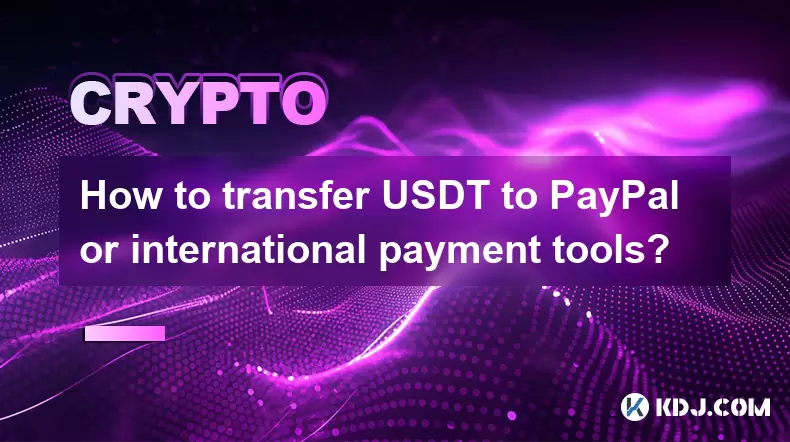
How to transfer USDT to PayPal or international payment tools?
Jun 15,2025 at 05:28am
Understanding the Basics of USDT and PayPal IntegrationUSDT (Tether) is a stablecoin pegged to the US dollar, offering blockchain-based value transfer with minimal volatility. PayPal, on the other hand, is a centralized digital wallet that facilitates fiat currency transactions globally. Direct integration between USDT and PayPal does not exist due to t...
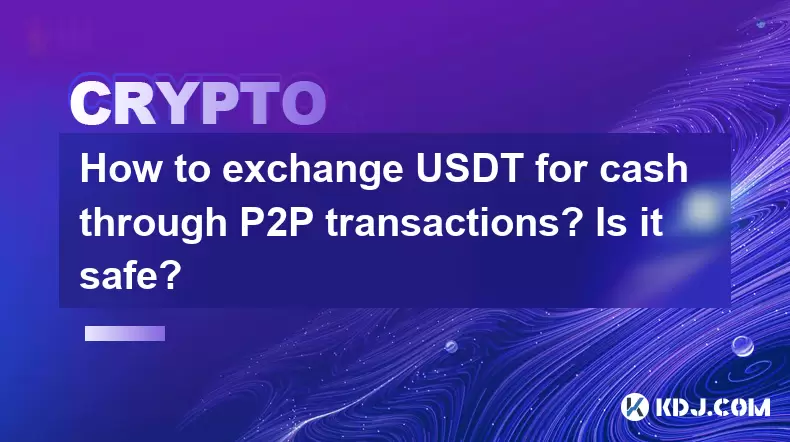
How to exchange USDT for cash through P2P transactions? Is it safe?
Jun 18,2025 at 07:56am
Understanding USDT and P2P TransactionsTether (USDT) is a stablecoin pegged to the value of the US dollar, making it a popular choice for users who want to avoid the volatility of other cryptocurrencies while still participating in the crypto ecosystem. Peer-to-peer (P2P) transactions allow individuals to trade directly with each other without going thr...
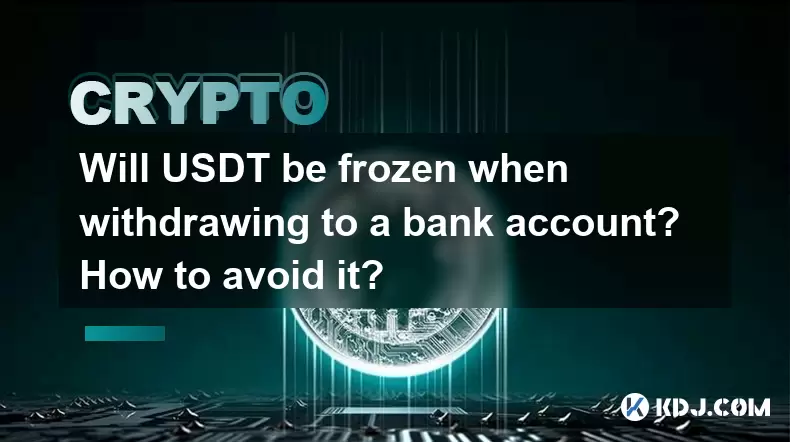
Will USDT be frozen when withdrawing to a bank account? How to avoid it?
Jun 15,2025 at 10:03am
Understanding USDT Withdrawals and Bank Account Freezing RisksWhen users decide to withdraw USDT (Tether) to a bank account, one of the most common concerns is whether their funds will be frozen during the process. This concern stems from real-life cases where individuals have encountered delays or restrictions when converting digital assets into fiat c...

How to avoid risks when exchanging USDT for cash? What are the pitfalls?
Jun 11,2025 at 08:14pm
Understanding the Risks of Exchanging USDT for CashWhen exchanging USDT (Tether) for cash, users must be aware of the potential risks involved. As a stablecoin pegged to the US dollar, USDT is widely used in crypto transactions due to its price stability. However, converting it into fiat currency like USD or CNY can expose users to several pitfalls, inc...

How to choose a reliable USDT exchange service provider? How to identify?
Jun 12,2025 at 03:15pm
Understanding the Role of USDT in Cryptocurrency TradingUSDT (Tether) is one of the most widely used stablecoins in the cryptocurrency market. It is designed to maintain a 1:1 peg with the U.S. dollar, offering traders and investors a way to hedge against volatility while remaining within the crypto ecosystem. Choosing a reliable USDT exchange service p...

What is the most convenient way to cash out small amounts of USDT? Is there a shortcut?
Jun 11,2025 at 11:00pm
Understanding the Need to Cash Out Small USDT AmountsCashing out small amounts of USDT can be a challenge for many crypto users. Traditional methods often involve high fees, minimum withdrawal limits, or cumbersome verification processes that make it inefficient for small transactions. The key is to find a method that balances speed, cost, and convenien...

How to transfer USDT to PayPal or international payment tools?
Jun 15,2025 at 05:28am
Understanding the Basics of USDT and PayPal IntegrationUSDT (Tether) is a stablecoin pegged to the US dollar, offering blockchain-based value transfer with minimal volatility. PayPal, on the other hand, is a centralized digital wallet that facilitates fiat currency transactions globally. Direct integration between USDT and PayPal does not exist due to t...

How to exchange USDT for cash through P2P transactions? Is it safe?
Jun 18,2025 at 07:56am
Understanding USDT and P2P TransactionsTether (USDT) is a stablecoin pegged to the value of the US dollar, making it a popular choice for users who want to avoid the volatility of other cryptocurrencies while still participating in the crypto ecosystem. Peer-to-peer (P2P) transactions allow individuals to trade directly with each other without going thr...

Will USDT be frozen when withdrawing to a bank account? How to avoid it?
Jun 15,2025 at 10:03am
Understanding USDT Withdrawals and Bank Account Freezing RisksWhen users decide to withdraw USDT (Tether) to a bank account, one of the most common concerns is whether their funds will be frozen during the process. This concern stems from real-life cases where individuals have encountered delays or restrictions when converting digital assets into fiat c...

How to avoid risks when exchanging USDT for cash? What are the pitfalls?
Jun 11,2025 at 08:14pm
Understanding the Risks of Exchanging USDT for CashWhen exchanging USDT (Tether) for cash, users must be aware of the potential risks involved. As a stablecoin pegged to the US dollar, USDT is widely used in crypto transactions due to its price stability. However, converting it into fiat currency like USD or CNY can expose users to several pitfalls, inc...
See all articles

























































































